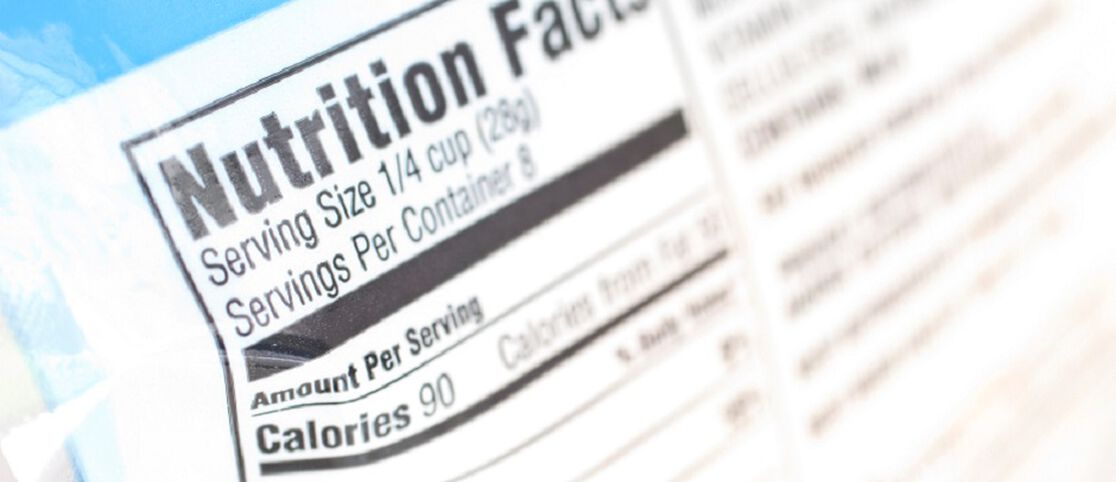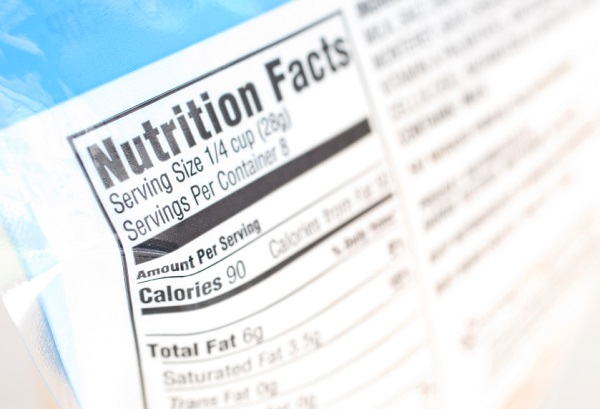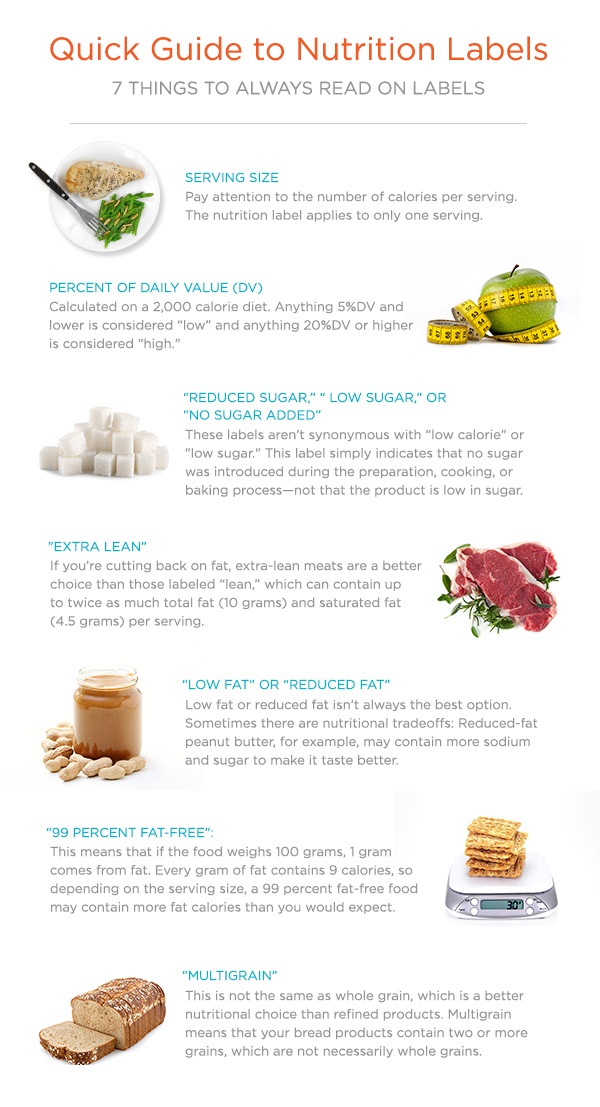Walk into any supermarket and you’ll see thousands of items to choose from. But how do we select the healthiest foods for ourselves and our families? Luckily, we can rely on nutrition labels to guide us in making the healthiest choices. Reading every label might seem overwhelming at first but when you know what to look for, the nutrition label becomes a tool that can help you make smarter choices. (TIP: Always go to the market on a full stomach and with a grocery list to avoid purchasing any unhealthy items!). Here are seven important things to look for when reading nutrition labels:
Serving Size
This number is at the top for a reason: The nutritional information on the rest of the label applies to one serving. The FDA sets serving sizes for all foods―they are measurements, not recommendations, which is an important thing to remember. Total calories are calculated per serving, so be sure to look at the servings per container. A box of crackers might list a serving as 150 calories, but the entire box might be three servings, or 450 calories.
Percent of Daily Value (DV)
This is calculated based on a 2,000 calorie per day diet. A tip for using the %DV is that anything 5%DV and lower is considered “low” and anything 20%DV or higher is considered “high.” So for things like fat, cholesterol, and sodium look for 5% or less and for things like fiber, vitamins, and calcium look for 20% or more.
“Reduced Sugar,” “Low Sugar,” or “ No Sugar Added”
Unfortunately these labels aren’t synonymous with “low calorie.” “Reduced sugar” means the product contains 25 percent less sugar than the original form. “Low sugar” isn’t a regulated term and can mean anything. “No sugar added” simply indicates that no sugar was introduced during the preparation, cooking, or baking process — not that the product is low in sugar. It may contain fructose, which still shows up as “sugar” on the nutrition-facts panel (as with unsweetened applesauce, for instance). Tip: Try calculating sugar content in teaspoons for an eye opening experience. First, find the number of grams of sugar in one serving of the product. Four grams of sugar equal about 1 teaspoon. The American Heart Association recommends a daily maximum of about 6-8 teaspoons (or 24-32 grams) of added sugar (meaning sugar that’s beyond what food naturally contains). And remember: Even if you don’t see sugar in the ingredients, it might be there. It goes by many other names, including molasses, evaporated cane juice, nectar, corn sweetener, honey, syrup, and anything ending with -ose (sucrose, dextrose, fructose, maltose).
“Extra Lean”
Meat, poultry, or seafood labeled “extra lean” must meet strict requirements by the U.S. Food and Drug Administration (FDA). Every 100-gram serving (about 3.5 ounces) must have fewer than 5 grams of total fat, fewer than 2 grams of saturated fat, and fewer than 95 milligrams of cholesterol. If you’re cutting back on fat, extra-lean products are a better choice than those labeled “lean,” which can contain up to twice as much total fat (10 grams) and saturated fat (4.5 grams) per serving, with the same maximum amount of cholesterol.
“Low Fat” or “Reduced Fat”
Foods labeled “low fat” are required by the FDA to contain fewer than 3 grams of fat per serving. “Reduced fat” means the food must contain at least 25 percent less fat than the original form. Tip: Low fat or reduced fat isn’t always the best option. Sometimes there are nutritional tradeoffs: Reduced-fat peanut butter, for example, may contain more sodium and sugar to make it taste better. Read the nutrition facts before you buy.
“99 Percent Fat-Free”
This one involves you to go back to your high school math class...“99 percent fat-free” means that 99 percent of a given weight of the food is fat-free. If the food weighs 100 grams, 1 gram comes from fat. Every gram of fat contains 9 calories, so depending on the serving size, a 99 percent fat-free food may contain more fat calories than you would expect.
“Multigrain”
This one tends to confuse a lot of folks. What it really means is that your bread, cereal, chips, or crackers contain two or more grains. They are not necessarily whole grains, which are a better nutritional choice than refined ones. With refined grains (such as white bread, or wheat breads that aren’t specifically labeled “whole wheat”), the nutrient and fiber rich parts have been milled out. The current recommendation is to make sure at least half your daily grains are whole. Tip: Whole-grain products list the word whole (as in “whole wheat” or “whole oats”) among the first few ingredients. You might also look for the Whole Grains Council’s symbol. Companies can pay to join this organization and receive its “stamp” on products that deliver at least 8 grams of whole grains per serving.
This information pertains to products with food labels, which you can typically find on most items in the supermarket and some at the farmer’s market. Try to do most of your shopping on the outer rim of the market where you’ll find fruits, vegetables, dairy, nuts, beans, and other whole foods to avoid having to look at too many food labels on processed foods. Choose items with as few ingredients as possible and use the information above to be an educated shopper!
Save these quick tips to your health-related Pinterest board for quick reference in the grocery store:
Be Well, Be NutritionWise!
~ Nicole Meadow, MPN, RD, CSP, CLC
We aim to provide you with the most honest and credible information possible. This article was reviewed for accuracy by The Honest Team and was written based on sources that are linked at the bottom of the article.
blog_review_statement





